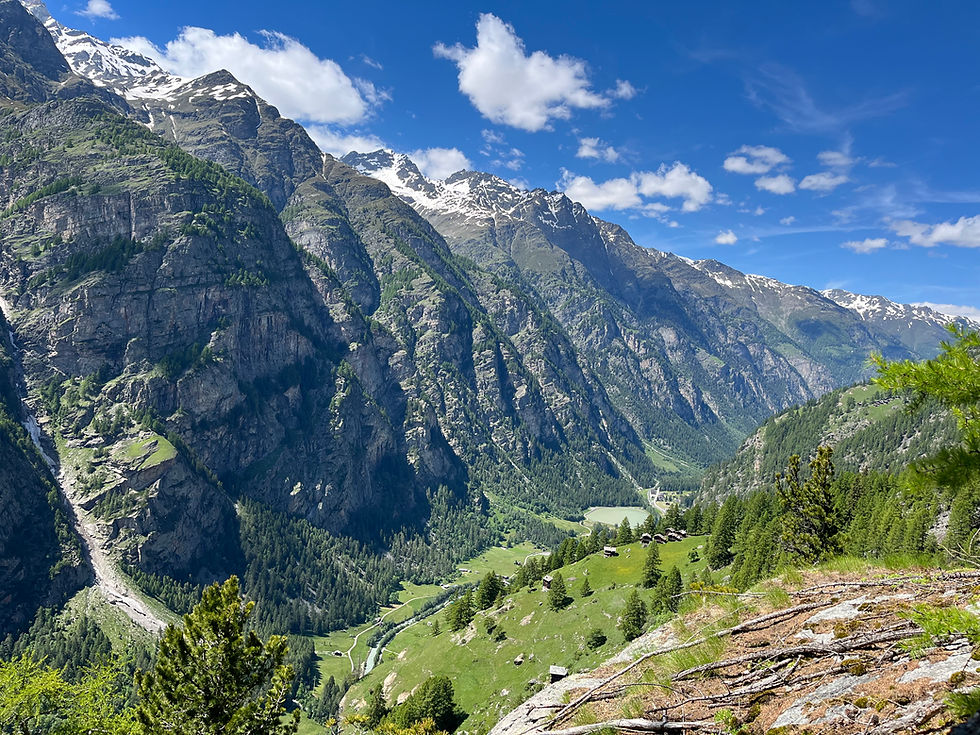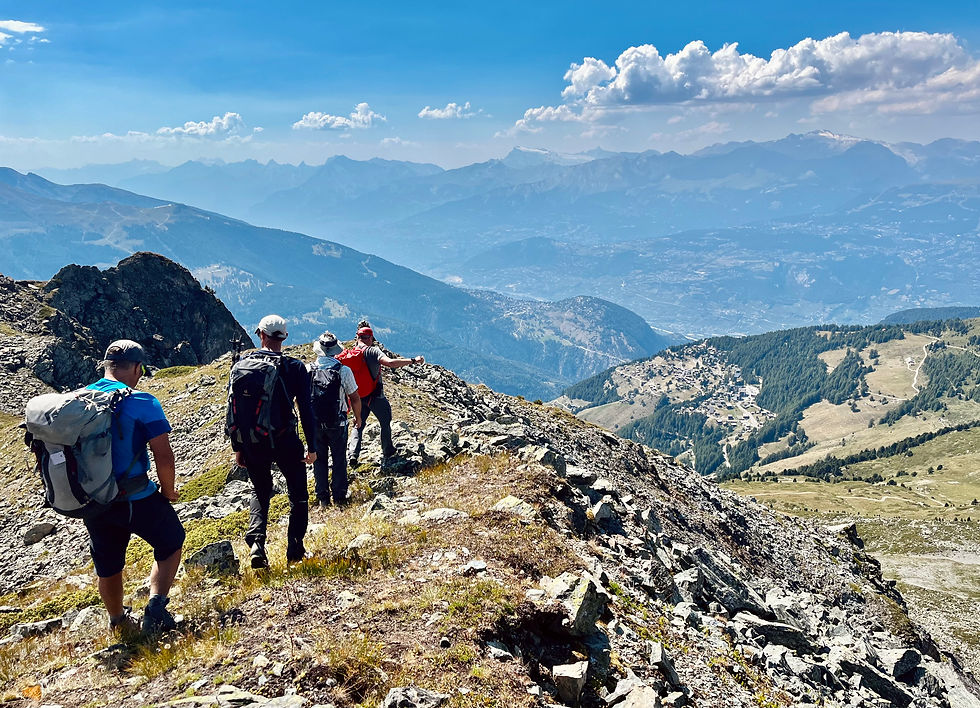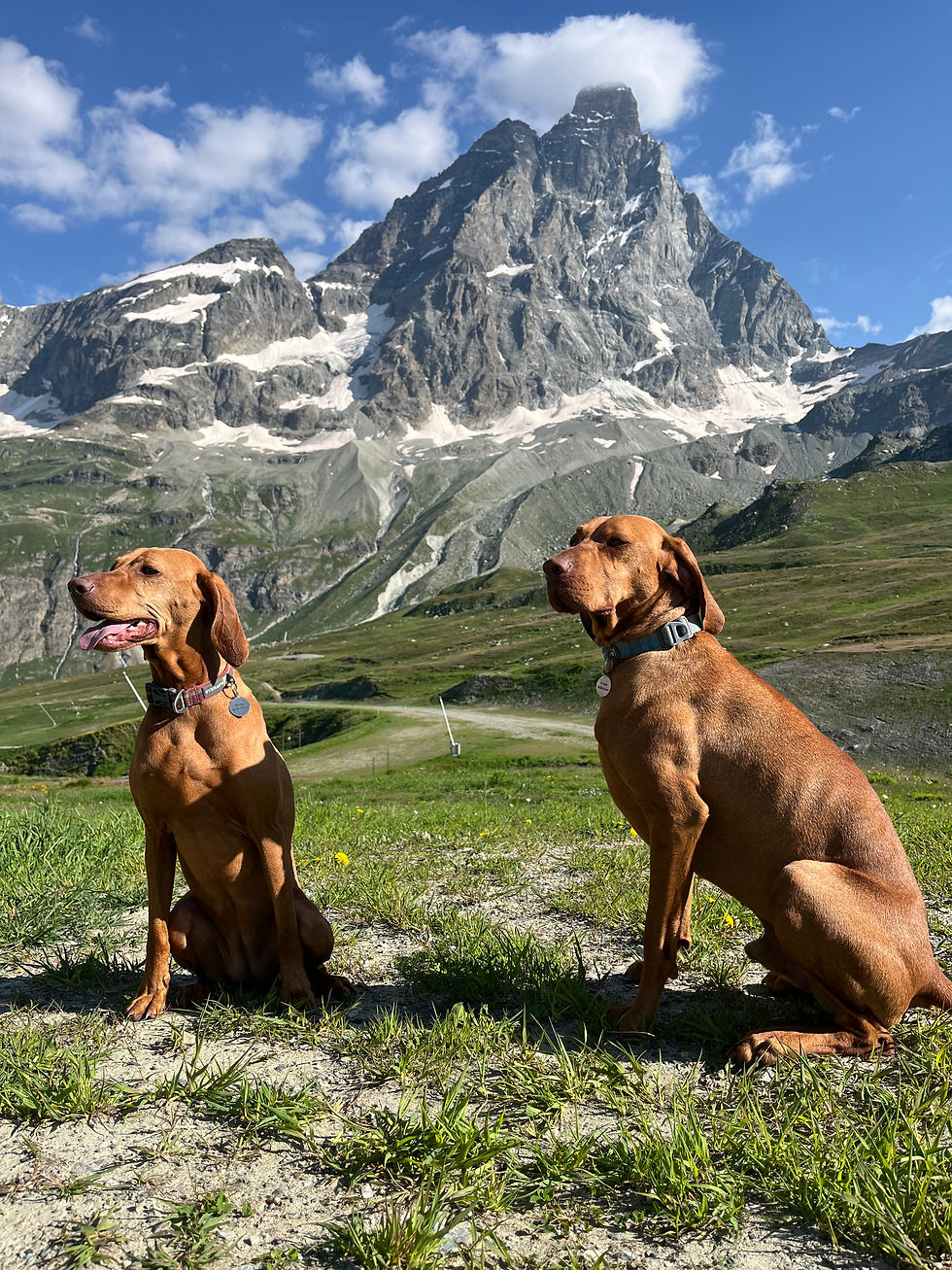How to train for a 3-day Alpine Adventure, using your fitness studio to best effect
- Tom Wilkinson

- Dec 5, 2024
- 4 min read
Updated: Dec 17, 2024

Picture yourself conquering the stunning trails of the Swiss Alps, breathing in crisp mountain air, and feeling the satisfaction of each step on your alpine adventure. To fully enjoy this experience, preparation is key—a mix of fitness studio workouts and outdoor practice will ensure you're ready for the challenge.
Preparing for a three-day alpine trek in the Swiss Alps requires a strategic mix of fitness studio training and real-world hiking practice. Fitness studio workouts are great as they can give you 80% of the readiness you need for a trek, building strength, endurance, and stability. However, to reach 100% preparedness, you’ll need to include outdoor practice to condition your feet, shoulders, and body for the unique demands of hiking in boots with a loaded rucksack.
Fitness Studio Training: Building Strength and Endurance
Engaging in structured workouts at fitness studios such as Elevate Fitness Studios can very effectively develop the lion’s share of physical readiness required for alpine trekking. Key areas to focus on include:

Strength Training
Incorporate exercises such as squats, lunges, and deadlifts to build lower body strength, essential for handling uneven terrain and steep ascents.
These exercises target major muscle groups, enhancing your ability to carry a loaded backpack over long distances.

Cardiovascular Conditioning
Utilise the treadmill to build cardiovascular endurance and to simulate uphill hiking. The high-intensity interval training that the Elevate Fitness Studio sessions regularly run is perfect for boosting your stamina for sustained physical activity. High-intensity interval training (HIIT) mimics the effort required to tackle steep ascents followed by flatter recovery sections on mountain trails, making it an ideal way to prepare your body for alpine hiking.
If the incline or pace on the treadmill is too much, walking briskly on an incline is really beneficial, as it closely mimics the effort of ascending alpine trails while being more sustainable for many than running.
Core Stability
Perform planks, side planks, jackknives, and other core exercises to enhance balance and stability, reducing the risk of falls and injuries on uneven alpine trails. A well-structured all-over functional fitness workout, such as those that Elevate Fitness Studio puts on multiple times a day, is perfect for developing your core and also supports your arms, back and shoulders, making it easier to carry a rucksack for hours at a time.

The Necessity of Outdoor Training
While studio workouts are invaluable, they cannot entirely replicate the conditions of alpine hiking. To fully prepare, it’s essential to introduce outdoor practice in the 12 weeks leading up to your adventure:
Footwear Acclimatisation: Regular outdoor hikes in your hiking boots help prevent blisters and discomfort during your trek. This practice allows your feet to adapt to the specific footwear you’ll use in the Alps.
Backpack Conditioning: Training with a loaded backpack outdoors conditions your shoulders and back to the weight you’ll carry, ensuring comfort and reducing fatigue during the actual hike.
Building Duration: Over 12 weeks, progressively increase your walking duration to condition your body for sustained effort. Here's a suggested plan:
Weeks 1-3: Begin with one-hour walks weekly, ending with a three-hour walk in Week 3.
Weeks 4-6: Add a five-hour walk in Week 6.
Weeks 7-9: Increase to an eight-hour walk in Week 9 to simulate a full day in the Alps.
Weeks 10-12: Scale back to one-hour walks to allow your body to rest and recover before your trek.
This gradual progression ensures your body adapts safely while reducing the risk of overtraining or injury.
Terrain Familiarisation: If hilly terrain isn’t at all accessible, that’s okay—use the treadmill in the studio and then focus outdoors on walking for long periods anywhere at all to build endurance. Make sure to practice carrying your pack to allow your shoulders, feet and other parts of your body, to become conditioned.
Integrating Indoor and Outdoor Training
To optimise your preparation, follow these guidelines:
80:20: 80% of your prep will come from your work in the studio doing high intensity workouts that involve the treadmill and full-body strength work. 20% will come from your time outdoors on hilly rough terrain, wearing your backpack and appropriate footwear. Focus on strength, cardio, and core stability indoors, and endurance and terrain adaptation outdoors.
Progressive Loading: Gradually increase the length of the walks you do and if you’re using the treadmill to simulate hilly walking, the incline gradient. The rucksacks for a 3-day hut-to-hut trip should be maximum 8kg, therefore you can start your outdoor sessions with your full 8kg load.
Busy lives: Remember, consistency is key. If you're short on time, prioritise high-intensity studio workouts during the week and reserve weekends for longer outdoor walks.
Final tips
Stay Hydrated: Always carry water during your outdoor hikes and stay hydrated during studio sessions.
Listen to Your Body: Rest if you feel fatigued to avoid injury.
Seek advice from experts: Such as those at Elevate Fitness Studios
Enjoy the Journey: Training for a Swiss Alps trek is as much about the preparation as the adventure itself. Embrace the process and look forward to the incredible experience ahead!





Comments